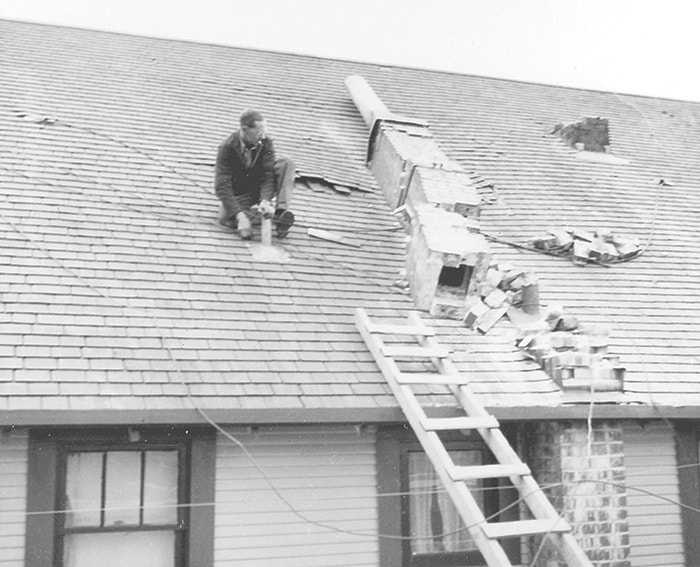Danyon Whyte
Museum at Campbell River
One lazy June morning 70 years ago in Campbell River, Bill McNeil was taking a test drive in a dump truck. During the ride Bill noticed the truck shaking, and bouncing about. He assumed that it was the truck’s fault. He complained profusely about it to the seller, who said, “There’s been an earthquake”. It was Vancouver Island’s biggest earthquake to date, in fact.
The earthquake occurred on Sunday, June 23, 1946, at 10:13 in the morning, and lasted for approximately 30 seconds. It measured 7.2-7.3 on the Richter Scale with the epicenter approximately 16 kilometers south-east of Campbell River, on the Beaufort Range in Strathcona Park. The quake affected an area that reached all the way to Kamloops and Tacoma, but if affected Vancouver Island, and surrounding islands, most of all.
“…the land was moving like waves, like ocean waves, and I could hear a roar.” Wallace Baikie probably witnessed a “Surface Wave” while out golfing that morning. Surface waves shake the ground in an undulating pattern, like an ocean wave does, exactly as Baikie described.
“The house was shaken off the blocks and it fell into the excavation. The piano rolled across the room and smashed into a wall. Everything in the way of dishes was broken except for two glasses.” Elaine Sanderson tells of the ruin of the Wilkes’ home while it was on stilts, having a basement installed under it. Les McDonald witnessed a scene outside that was straight out of a science fiction novel. “When we finally got outside, we could see geysers shooting 20 or 30 feet into the air, water and sand geysers.” Campbell River experienced several thousand dollars’ worth of damage (approximately $100,000 in today’s value).
The greatest loss of this day was the lives of two men. One from a heart attack just from the shock, while the other drowned. Daniel Fidler, the drowning victim, was sailing his dinghy when the violent waves caused by the earthquake capsized his vessel.
Early Campbell Riverites endured the earthquake of 1946 with minimal disruption to their way of life, taking it in stride. They repaired the damage, and recalled humorous stories that came out of the earthquake.
One such story is told about an elderly couple who lived at Willow Point and had just installed an electric fence around their garden to keep cattle from trampling it and grazing there. On the day of the earthquake, the farmer was irate to spot the hungry cows trying to pass through the fence to get to the free snack inside. He quickly leapt to the lever to turn it on before the cattle could demolish his crops. When he flipped the switch the house and all the possessions within started to shake. His wife yelled at him, “Quick, turn that thing off before you shake the whole house down!”
That same day, there was an old man who had frequent heart attacks. He decided to take a bike ride on the morning of the earthquake as it was a beautiful summer morning. During his ride he fell to the ground and started shaking about.
A concerned passerby asked, “Are you okay? Are you having a heart attack?” The old man shook his head and chuckled while still on the ground. He pointed towards his bicycle, “If I’m having one then my bike is too.”
Not everyone was able to take such a relaxed view of what the community had experienced. Many people were terrified and took it quite seriously.
The resiliency of these early residents combined with their rural lifestyle and wooden-framed homes served them well for enduring what today would have likely been quite a destructive event.
Danyon Whyte is a Carihi High student doing Work Experience at the Museum at Campbell River. www.crmuseum.ca
